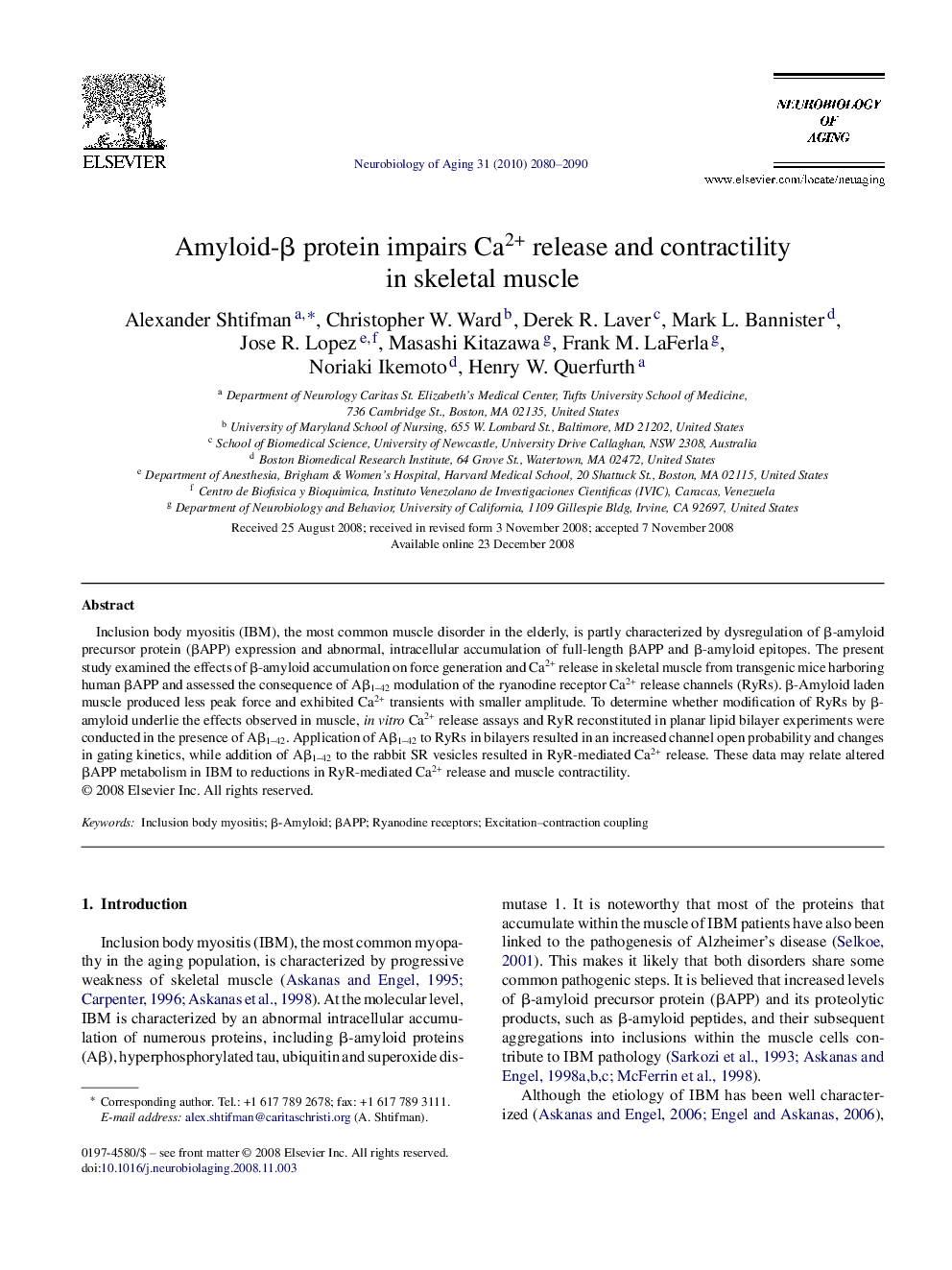| Article ID | Journal | Published Year | Pages | File Type |
|---|---|---|---|---|
| 331020 | Neurobiology of Aging | 2010 | 11 Pages |
Inclusion body myositis (IBM), the most common muscle disorder in the elderly, is partly characterized by dysregulation of β-amyloid precursor protein (βAPP) expression and abnormal, intracellular accumulation of full-length βAPP and β-amyloid epitopes. The present study examined the effects of β-amyloid accumulation on force generation and Ca2+ release in skeletal muscle from transgenic mice harboring human βAPP and assessed the consequence of Aβ1–42 modulation of the ryanodine receptor Ca2+ release channels (RyRs). β-Amyloid laden muscle produced less peak force and exhibited Ca2+ transients with smaller amplitude. To determine whether modification of RyRs by β-amyloid underlie the effects observed in muscle, in vitro Ca2+ release assays and RyR reconstituted in planar lipid bilayer experiments were conducted in the presence of Aβ1–42. Application of Aβ1–42 to RyRs in bilayers resulted in an increased channel open probability and changes in gating kinetics, while addition of Aβ1–42 to the rabbit SR vesicles resulted in RyR-mediated Ca2+ release. These data may relate altered βAPP metabolism in IBM to reductions in RyR-mediated Ca2+ release and muscle contractility.
